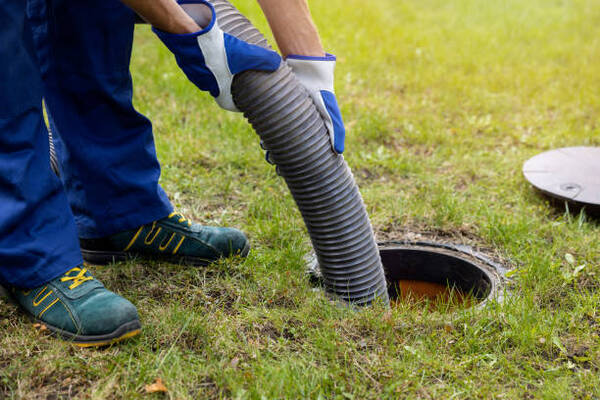- 1-905-452-8193
- Contact Us
- Member Login
- Get Listed Today
- 220,911 members

A septic tank is an underground wastewater treatment system commonly used in rural areas where connecting to a central sewage system is not possible. Your plumber Brisbane North may also refer to septic tanks as onsite wastewater systems, and these containers can provide a cost-effective way of treating household wastewater.
Septic tanks are typically made of concrete, fibreglass, or plastic and range in size from 200 gallons to 1,000 gallons. The average septic tank installation is usually between 300-500 gallons. The tank itself acts as both a settling compartment and a holding area for the wastewater that enters it. Solid material settles out of the incoming water into sludge while scum floats on top of the wastewater within the tank.
The liquid effluent then exits the tank and enters a distribution box, which is usually buried underneath the soil. The liquid effluent then flows through a network of perforated pipes known as leach lines or drain fields where it is further filtered and purified by bacteria in the surrounding soil.
Maintaining a septic tank is essential in keeping your home and property safe from the contaminants that can build up in the system over time. Proper maintenance will help ensure that your septic system runs properly and efficiently, while also preventing costly repairs down the road. Unfortunately, many homeowners fail to take proper care of their septic tanks, leading to costly repairs and dangerous health hazards.
To make sure your plumbing continues to run correctly for years to come, here are some helpful tips for proper septic tank maintenance.
Have the system inspected regularly
Professional inspections should be done at least once a year or after any major changes are made to the plumbing system. During the inspection, the technician will check for problems such as blocked pipes and damaged components that could affect performance.
Avoid flushing foreign objects
Flushing non-biodegradable items like plastics or paper towels can clog up the drain field and cause a backup. It’s best to stick with only water-soluble items such as toilet paper, facial tissue, and human waste.
Avoid tree roots near the system
Tree roots can damage a septic tank by puncturing pipes or blocking the drainage field. Plant trees at least 30 feet away from your septic system to avoid problems down the road.
Conserve water
Excess water in the tank can cause it to overflow, leading to additional waste buildup and clogs throughout the system. To prevent this from happening, conserve as much water as possible and try using low-flow toilets, faucets, and showerheads when possible.
Use septic-friendly detergents
Harsh chemicals and bleaches can damage the bacteria in your septic tank, making it less effective. To avoid this, use biodegradable cleaning products or ones specifically designed for septic systems.
Pump the tank regularly
It’s important to pump out the sludge and solid waste from your septic tank every 3-5 years depending on usage. This will keep your system running at peak performance and minimize the risk of clogging up the drainage field.
Watch what you put down drains
Certain substances like grease, cooking oil, paints, solvents, and pesticides should never be put down your drains as they can cause serious problems with your septic system.
Install a root interception system
If you have trees near your septic tank, consider installing a root interception system to prevent tree roots from infiltrating your pipes and blocking drainage.
Don’t park or drive in the area
The soil over your septic tank is designed to filter out waste and keep it from entering the local groundwater supply. Avoid parking or driving over this area so as not to cause any damage or create sinkholes.
Monitor changes
Be sure to monitor any changes in your plumbing and septic system such as slow draining, foul odours, gurgling sounds, pooling water, or any other signs of potential problems so you can address them before they become too severe.
By following these tips for proper septic tank maintenance, you can ensure your system is functioning correctly and that any potential problems are addressed quickly and effectively. Remember to consult a professional whenever you have questions or concerns about your septic tank.
